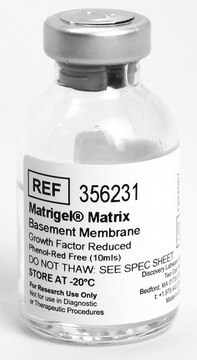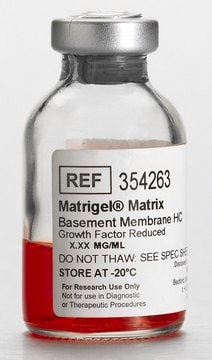SRP8012
Jagged-1 (human): FC (human)
recombinant, expressed in HEK 293 cells, >90% (SDS-PAGE)
Synonym(e):
JAG1, Protein jagged-1, Tweak-receptor, hJ1
About This Item
Empfohlene Produkte
Biologische Quelle
human
Rekombinant
expressed in HEK 293 cells
Assay
>90% (SDS-PAGE)
Form
liquid
Mol-Gew.
~150 kDa by SDS-PAGE
Verpackung
pkg of 10 μg
Lagerbedingungen
avoid repeated freeze/thaw cycles
Konzentration
≥0.2 mg/mL
Methode(n)
ligand binding assay: suitable
Verunreinigungen
<0.1 EU/μg endotoxin, tested
Eignung
suitable for molecular biology
UniProt-Hinterlegungsnummer
Versandbedingung
wet ice
Lagertemp.
−20°C
Angaben zum Gen
human ... JAG1(182)
Allgemeine Beschreibung
Anwendung
Biochem./physiol. Wirkung
Physikalische Form
Sonstige Hinweise
Lagerklassenschlüssel
10 - Combustible liquids
Flammpunkt (°F)
Not applicable
Flammpunkt (°C)
Not applicable
Analysenzertifikate (COA)
Suchen Sie nach Analysenzertifikate (COA), indem Sie die Lot-/Chargennummer des Produkts eingeben. Lot- und Chargennummern sind auf dem Produktetikett hinter den Wörtern ‘Lot’ oder ‘Batch’ (Lot oder Charge) zu finden.
Besitzen Sie dieses Produkt bereits?
In der Dokumentenbibliothek finden Sie die Dokumentation zu den Produkten, die Sie kürzlich erworben haben.
Unser Team von Wissenschaftlern verfügt über Erfahrung in allen Forschungsbereichen einschließlich Life Science, Materialwissenschaften, chemischer Synthese, Chromatographie, Analytik und vielen mehr..
Setzen Sie sich mit dem technischen Dienst in Verbindung.








